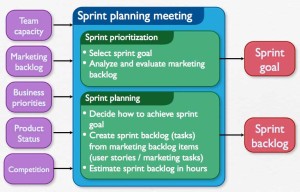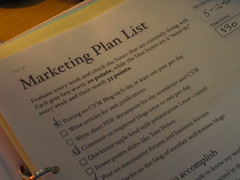How to Run an Agile Marketing Sprint Planning Session

Agile Marketing teams that are using Scrum begin the Sprint process with an Agile Marketing Sprint Planning session. Sprint Planning, one of the four key “ceremonies” of Scrum (the others are the Sprint Review, Sprint Retrospective and the daily Scrum), establishes the baseline assumptions of the company’s approach to the market, the goals of the Sprint, and the list of activities which the marketing team will do to reach those goals. To say that it is important to the success of the Sprint, and to the success of the marketing team, would be an understatement.
So how does one run a successful Agile Marketing Sprint Planning session? What are the key agenda items? What are the inputs? What are the outputs? I’ll try to answer these questions and more in this post.





